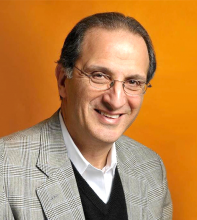You are here
Protecting Arab American identity
Apr 23,2024 - Last updated at Apr 23,2024
It took over a half century to strengthen the Arab American identity and build organisations to meet community needs. Today this work is under assault by those seeking to erase our gains, fracture the community along sectarian lines, or silence our voices in US politics.
First, a bit of history:
Just six decades ago there was no organized Arab American community. Most people of Arab descent in America were descendants of World War I era immigration, primarily from Syria/Lebanon, who formed organisations emphasising country-specific or village identities. There were also Palestinian village clubs. Like other immigrant communities of this era, the major institutions organising early Arab immigrants were churches or mosques.
After the freeze on Arab world immigration was lifted in the 1950s, Arab immigration increased and grew more diverse. This change, coupled with the growing population of earlier immigrants’ descendants, accelerated the formation of an Arab American identity.
The new, more diverse Arab immigrants and students came to the US with ideas of political pan-Arabism. The offspring of WWI-era immigrants came to embrace Arab American identity for different reasons. They were more integrated into American society, and instead of the narrower country, village, or sect-based identities, they were drawn to a shared cultural heritage, including Palestine, an issue that became central to the community for two reasons.
First, it was understood as a grave injustice done to the Palestinian Arab people, many of whom had family in the US. Second, Palestine grew in importance in shaping the Arab American identity because of the discrimination and exclusion encountered by many Arab Americans, for expressing sympathy for the Palestinian cause, or for the presumption of being pro-Palestinian because of their Arab descent. The “injustice over there” was compounded by “injustice over here”.
Early major national organisations, Association of Arab American University Graduates and National Association of Arab Americans, shared a commitment to community building based on shared heritage and identity, including the issue of Palestinian rights. They deemphasised divisions of religious affiliation, national origin, or immigrant/native born status.
This effort to build a unified voice proved easy for some, yet challenged others, especially during Lebanon’s long civil war. Still, we persisted.
In 1980, former senator James Abourezk and I launched the American-Arab Anti-Discrimination Committee to combat the negative stereotypes of Arabs in media and popular culture and discrimination. As we travelled from city to city, we brought tens of thousands of Arab Americans, from every generation, country and religious affiliation, into our fold.
During the next decade we witnessed several key developments: Jesse Jackson’s presidential campaigns welcomed Arab Americans into the political mainstream; Arab American institutions grew stronger, focusing on social services, preserving and promoting our history and culture; major pro-Israel American Jewish groups pushed back, calling our community a “fiction” and pressuring others to exclude us; and we created the Arab American Institute, focusing on mobilising Arab Americans in US politics and public service.
The past three decades have brought significant accomplishments and new challenges for the Arab American community. Arab Americans have emerged as an important constituency courted by political campaigns and been elected to federal, state, and local office. Social service and cultural agencies care for new immigrants and educate others about our contributions to American life. And Arab American Heritage Month has been formally recognised by presidential proclamation, and celebrated by governors and legislatures in almost every state.
This increased recognition has increased pressure from forces seeking to stymie our growth and silence our voices. We’ve come to expect it and have steeled ourselves to fight. More difficult has been the effort to divide the community.
Efforts to sectarianise the community began with George W. Bush and continued in the Obama and Biden administrations, conflating Arab Americans with American Muslims and then dividing outreach efforts to “Christian Arabs”. Initiated at the highest levels of government, it’s spilled over into the media and even civil society initiatives.
Our national organisations are united in rejecting efforts to erase our non-sectarian ethnic Arab American identity and drag us back past divisions. We maintain the right to define ourselves based on our history and shared heritage. We remain unified as we fight against discrimination and political exclusion, and in our shared commitment to fight for justice for Palestinians and a more balanced American foreign policy promoting peace, security, and prosperity for all countries of the Arab world.
The writer is president of the Washington-based Arab American Institute















Add new comment